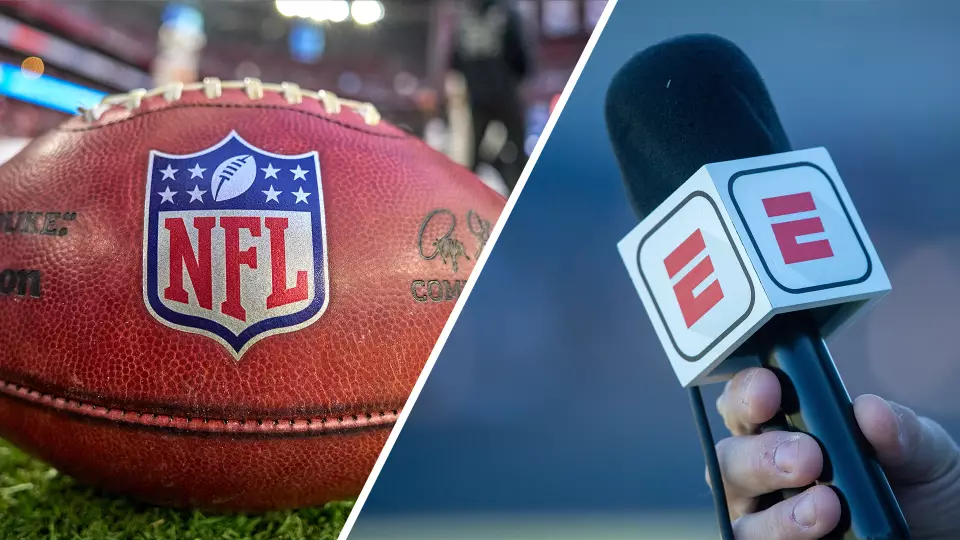The recent acquisition of NFL media assets by ESPN marks a pivotal shift in the landscape of sports broadcasting. This deal is not merely a business transaction; it signifies a bold strategic move to position ESPN as the central hub for American football fans. By integrating NFL Network, the RedZone channel, and licensing key content, ESPN aims to create an all-encompassing digital and linear ecosystem that caters to contemporary consumption habits. This merger hints at ESPN’s recognition of the evolving media environment — one where the emphasis is on providing fans with seamless, on-demand, and personalized football experiences.
What stands out here is ESPN’s ambition to leverage its vast reach and innovative capabilities. The move isn’t just about acquiring media rights but about redefining how fans engage with NFL content. By owning digital and linear rights simultaneously, ESPN positions itself to deliver more tailored, immediate, and interactive football coverage. The strategic infusion of NFL content into ESPN’s current ecosystem is indicative of a broader vision: making ESPN the definitive destination for football, merging traditional broadcast with cutting-edge streaming technology.
Imposing Control and Expanding Fan Horizons
One significant element of this deal is ESPN’s acquisition of the NFL’s popular fantasy football product. This is a masterstroke, as fantasy football has become a cultural phenomenon, deeply entwined with how millions experience the sport. Incorporating this into ESPN’s platform transforms the fan experience from passive viewership into active participation. The official recognition of ESPN Fantasy Football as the league’s official game signifies not only a branding milestone but also a strategic move to deepen fan engagement.
Furthermore, the deal allows ESPN to expand its football portfolio by licensing additional NFL games, increasing its annual coverage to 28 games. While the NFL retains ownership of NFL Network and its production capabilities, the alliance ensures ESPN’s expanded presence on both linear and digital platforms. This strategic distribution channels more content directly to fans, providing flexibility and convenience—two critical factors in today’s fragmented media landscape.
The control over RedZone, including intellectual property rights, is another testament to ESPN’s confidence in its ability to innovate around this high-demand channel. Despite the NFL’s ongoing ownership of the channel, ESPN’s ownership of the trademark allows it to develop and distribute RedZone more dynamically within its broader ecosystem.
Redefining Fan Engagement Through Innovation and Convenience
Perhaps the most intriguing aspect of the deal is ESPN’s broader vision for fan engagement in the digital age. The move towards a direct-to-consumer streaming product underscores the importance of convenience and personalization. Fans will now be able to access NFL content through ESPN’s upcoming platform, which is poised to blend live games, highlights, original programming, and fantasy tools into a unified digital portal.
This approach aligns with what modern sports consumers desire: choice, control, and immediacy. The integration of NFL Network into ESPN’s streaming services means fans won’t have to scroll through multiple platforms to keep up with their favorite teams or games. Instead, they will enjoy a streamlined, immersive experience that brings the sport closer to daily life.
Yet, this strategy also raises critical questions about media dominance and exclusivity. While offering more content-rich options, ESPN’s consolidation of NFL rights could marginalize smaller broadcasters and create an environment where a few corporate giants control access to football. This could lead to increased consumer costs and reduced competition in the long run, illustrating the delicate balancing act between innovation and monopolization.
Implications for the Future of Sports Media
Ultimately, this blockbuster deal signifies more than just an expansion of ESPN’s football portfolio—it signals a new era in sports media where strategic alignments aim to maximize reach, innovation, and consumer engagement. It showcases an understanding that tomorrow’s sports fans desire content that is accessible, interactive, and personalized. ESPN’s move to embed NFL content fully into its digital ecosystem demonstrates foresight but also places a spotlight on the challenges ahead: sustaining diverse content access, managing corporate interests, and ensuring that the consumer experience remains central.
This confluence of media rights and digital innovation positions ESPN not merely as a broadcaster but as an entertainment platform built around fan-centricity. The real question is whether this model, heavily driven by corporate consolidation, will serve the best interests of fans or push them further into a landscape dominated by giants. Regardless of the ultimate outcome, what’s clear is that ESPN’s ambitious undertaking is reshaping the very foundation of how football will be experienced, consumed, and cherished in the years to come.

